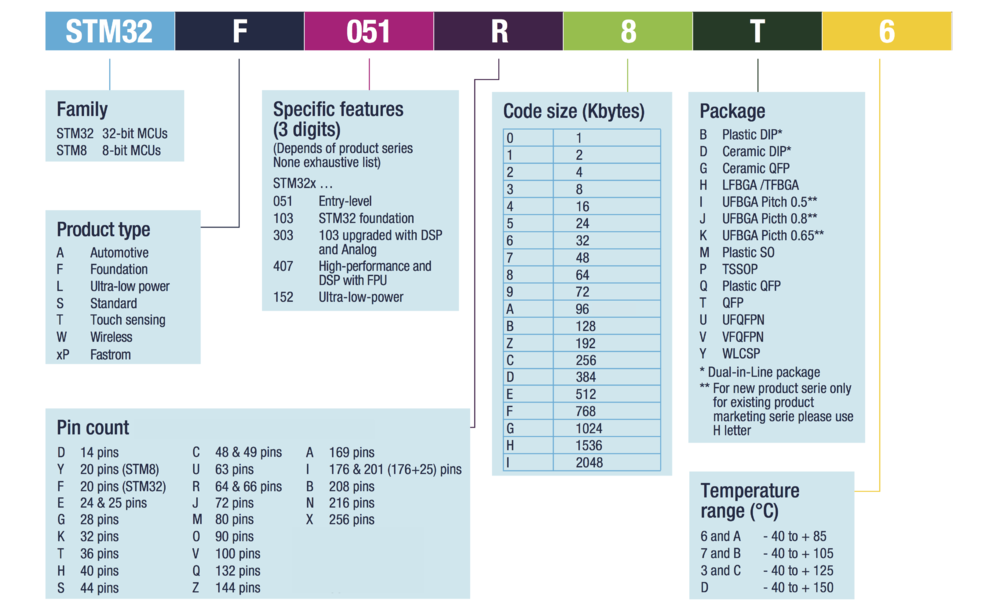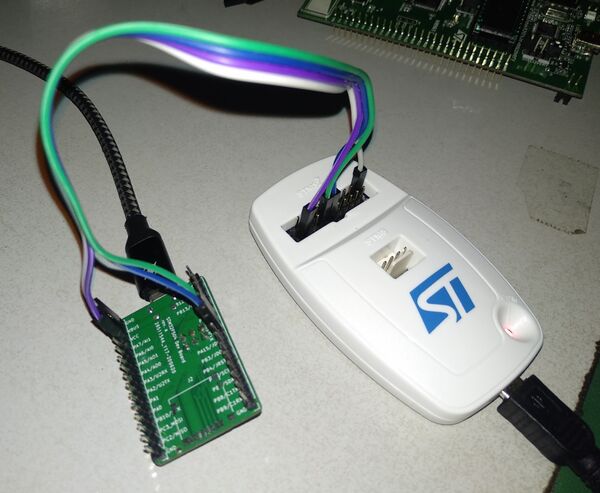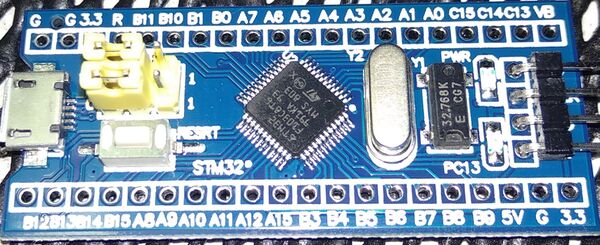STM32 Beginner - Getting started
Getting started with STM32 development is a daunting task.
| Arduino Uno | STM32 "Blue Pill"[1] | STM32 "Black Pill"[2] | |
|---|---|---|---|
| MCU | ATmega328P | STM32F103 | STM32F411 |
| Core | 8-bit | 32-bit ARM Cortex-M3 | 32-bit ARM Cortex-M4 |
| Clock | 16 MHz | 72 MHz | 100 MHz |
| RAM | 2 kB | 32 kB | 128 kB |
| Flash | 32 kB | 64 kB/128 kB | 512 kB |
| USB | Yes[3] | Gadget/Device | Gadget/Device or Host[4] |
| Timers | 2 | 7 | 11 |
| ADCs | 1 (8 channels) | 2 (16 channels) | 1 (16 channels) |
| DMA | No | Yes | Yes |
Basics
Understanding the part numbers
When initially looking into STM32 the sheer number of different "versions" appear baffling. I have no idea how many different STM32 MCUs there are but it has got to be in the "hundreds". Fortunately, ST didn't just pick part numbers at random, there is in fact a system to the madness. ST themselves, on their website, provide the following example:
While not specifically mentioned in the above breakdown, the first number in the features field typically indicate the ARM core version. "STM32F1xx" will be based on an ARM Cortex-M3 core, while "STM32F4xx" are based on a M4 core. Also, different models have different built-in features - number of UARTS, number of I2C ports, number of SPI ports and number of timers. Once you have a development board it is absolutely essential that you local the exact datasheet for the relevant MCU and familiarize yourself with the features.
GPIO Voltage
While most Arduinos run on 5 V, the STM32 can only accept up to 3.3 V (a 5 V supply will fry them). However, while the MCU itself require a <= 3.3 V supply voltage, most GPIO pins are so-called "five volt tolerant"[5].
Bootloader
All STM32 MCUs has got a built-in bootloader for "flashing". During startup, the status of the Boot 0 pin will be asserted. If "low" (GND) the MCU will start normally. If "high" (= supply voltage - typically 3.3V) the internal bootloader will be executed. This essentially mean that it is very hard to "brick" a STM32 MCU to a point where it can not be recovered.
Prerequisites
ST-Link
The ST-Link is a device especially designed to flash and debug STM32 MCU's.
ST can provide these at a reasonable price (< $20) but there are also a lot of Chinese "clones" available. The image to the right show a bunch of these clones.
While the original ST-Link devices provide additional features, the Chinese clones do get the job done and they have one benefit over the original that the pins on the device are clearly labelled. For some incomprehensible reason, ST decided not to label the pins on their device and that is really annoying in daily use.
Development Board
As mentioned earlier, there's a lot of different STM32 MCU variants and there's almost as many different development boards.
A very popular model was/is the so-called "Blue Pill" board:
There are different variants of these boards, but they are supposed to include a STM32F103 MCU. The problem is that almost none of them are. There are at least 6-8 Chinese companies making "clones" of the STM32F103 processor. Some of these are probably genuine MCUs with a properly licensed ARM core, that just happens to use the same memory map like the original. Some of these are labelled correctly and identifies themselves as "GD32F103" (from GigaDevice), HK32F103 or something else. Unfortunately some are labelled STM32F103xxx and it can be extremely hard to know which is which:
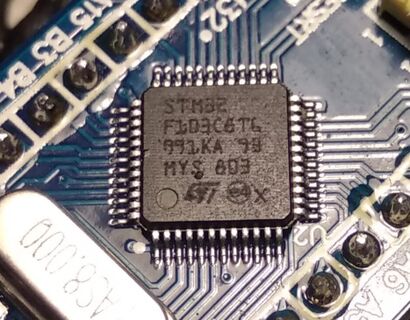
|
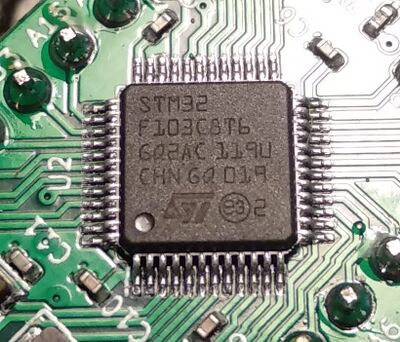
|
| Fake STM32F103 (possibly a HK32) from some random Blue Pill | Real STM32F103 from my own Green Pill board |
In short, while these boards are extremely cheap and readily available, I would suggest avoiding them completely. Working around the various bugs and lack of knowledge about the MCU just make them a gigantic waste of time.
A much better choice are the so-called "Black Pill" boards. Not only are they generally based on a much more powerful MCU but they are also normally real STM32s[6].
Arduino
Before diving into using the Arduino IDE with STM32 development boards, I would like to stress that I think it is a horrible approach to learning.
https://github.com/stm32duino/BoardManagerFiles/raw/main/package_stmicroelectronics_index.json
Stm32CubeIde
To be added
Miscellaneous Links
Arduino
To be added
Stm32CubeIde
To be added
References
- ↑ https://www.st.com/resource/en/datasheet/stm32f103c8.pdf
- ↑ https://www.st.com/resource/en/datasheet/stm32f411ce.pdf
- ↑ Flashing/Serial debug only
- ↑ The STM32F411 can run both Gadget and Host, but the actual development board might not support Host mode.
- ↑ There are some exceptions. When configured as an analog input pin, the pins are not 5V tolerant!
- ↑ I simply don't think fake [[STM32F411 exists at the moment even though that will probably change at some point
